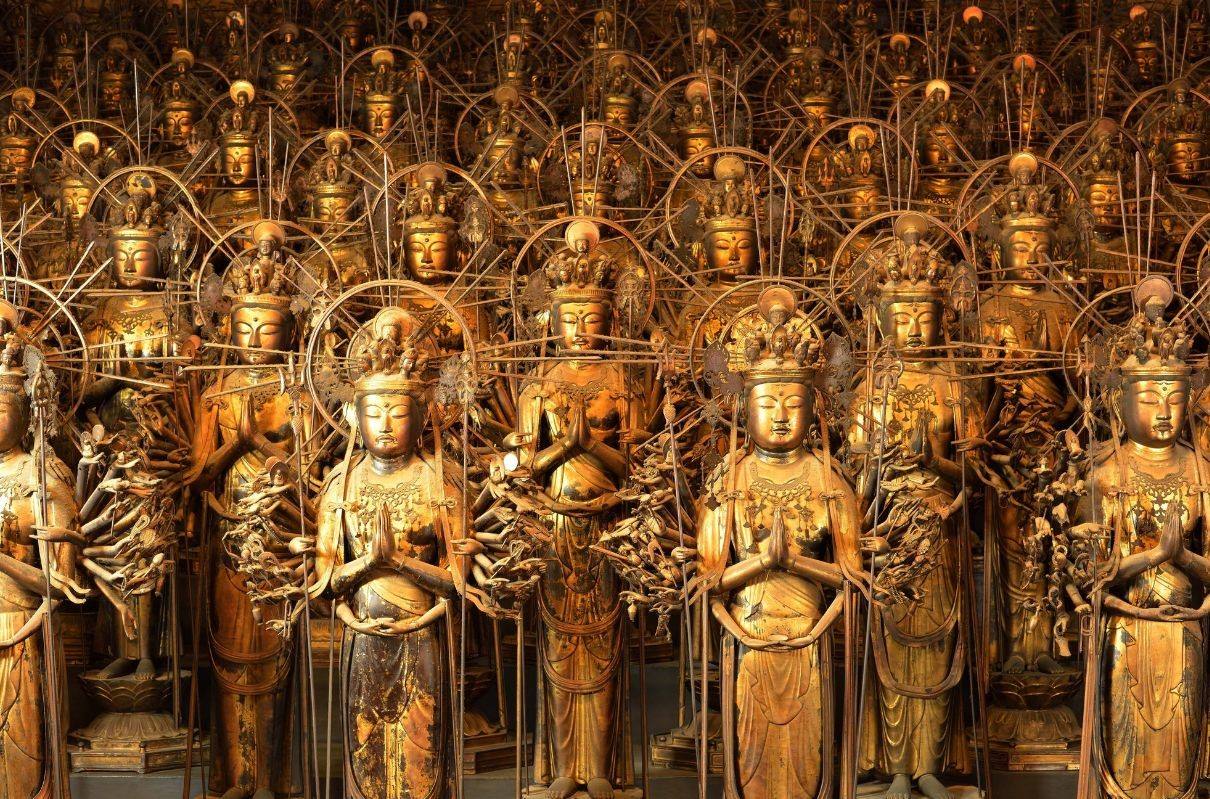
Sanjūsangen-dō is a fascinating temple in Kyoto, Japan, known for its impressive architecture and rich history. Built in 1164, this temple houses 1,001 statues of Kannon, the goddess of mercy. Why is Sanjūsangen-dō so special? The temple's name means "Hall with 33 Spaces Between Columns," reflecting its unique structure. Visitors are often amazed by the sheer number of statues, each with intricate details and expressions. The temple also hosts the annual Tōshiya archery contest, a tradition dating back to the Edo period. What else makes Sanjūsangen-dō worth visiting? Its serene atmosphere and historical significance make it a must-see for anyone interested in Japanese culture and history.
Sanjūsangen-dō: A Temple of Thousand Statues
Sanjūsangen-dō, located in Kyoto, Japan, is a Buddhist temple known for its impressive collection of statues. This temple, officially called Rengeō-in, has a rich history and unique features that make it a must-visit destination.
-
Sanjūsangen-dō means "Hall with 33 Spaces": The name refers to the architectural design of the building, which has 33 intervals between its columns. This design allows for the housing of numerous statues.
-
Home to 1,001 Kannon Statues: The temple is famous for its 1,001 statues of Kannon, the goddess of mercy. These statues are arranged in ten rows and fifty columns, creating a breathtaking sight.
-
Built in 1164: The original structure was constructed in 1164 by order of Emperor Go-Shirakawa. It was rebuilt in 1266 after a fire destroyed the original building.
-
Longest Wooden Structure in Japan: At 120 meters (394 feet) long, Sanjūsangen-dō is the longest wooden structure in Japan. This impressive length contributes to its grandeur and historical significance.
-
National Treasure: The temple and its statues are designated as National Treasures of Japan. This status highlights their cultural and historical importance.
The Statues: A Closer Look
The statues housed in Sanjūsangen-dō are not just numerous; they are also intricately designed and hold deep religious significance.
-
Thousand-Armed Kannon: The central statue is a large, seated Thousand-Armed Kannon, flanked by 500 standing Kannon statues on each side. This central figure is a masterpiece of Japanese Buddhist art.
-
Made of Cypress Wood: The statues are carved from Japanese cypress wood, known for its durability and fine grain. This choice of material has helped preserve the statues over centuries.
-
Covered in Gold Leaf: Many of the statues are covered in gold leaf, giving them a radiant appearance. This gold coating symbolizes the divine nature of Kannon.
-
Each Statue is Unique: Despite the large number of statues, each one has unique facial features and expressions. This individuality represents the belief that Kannon can take many forms to help those in need.
-
Created by Master Sculptors: The statues were crafted by master sculptors of the Kamakura period, including the famous artist Tankei. Their skill and artistry are evident in the intricate details of each statue.
Cultural and Historical Significance
Sanjūsangen-dō is not just an architectural marvel; it also holds a significant place in Japanese culture and history.
-
Annual Archery Contest: The temple hosts an annual archery contest called Tōshiya. This event dates back to the Edo period and attracts archers from all over Japan.
-
Healing Powers: Many believe that the temple has healing powers. Visitors often come to pray for health and recovery from illnesses.
-
Survived Natural Disasters: Despite being centuries old, Sanjūsangen-dō has survived numerous natural disasters, including earthquakes and fires. This resilience adds to its mystique and allure.
-
Popular Filming Location: The temple's unique atmosphere and historical significance make it a popular location for films and television shows. It has been featured in various Japanese media.
-
Tourist Attraction: Today, Sanjūsangen-dō is a major tourist attraction, drawing visitors from around the world. Its combination of history, art, and spirituality offers a unique experience for all who visit.
The Last Word on Sanjūsangen-dō
Sanjūsangen-dō stands as a testament to Japan's rich cultural heritage. With its 1,001 statues of Kannon, the temple offers a unique glimpse into the country's spiritual and artistic traditions. Each statue, meticulously crafted, tells a story of devotion and craftsmanship. The temple's annual archery event, Tōshiya, adds a dynamic layer to its historical significance, drawing visitors from all over. Whether you're a history buff, an art lover, or someone seeking spiritual solace, Sanjūsangen-dō has something to offer. Its long hall, filled with serene statues, provides a peaceful retreat from the hustle and bustle of modern life. Visiting this temple isn't just about seeing an ancient structure; it's about experiencing a piece of Japan's soul. So, next time you're in Kyoto, make sure to carve out some time for this extraordinary place. You won't regret it.
Was this page helpful?
Our commitment to delivering trustworthy and engaging content is at the heart of what we do. Each fact on our site is contributed by real users like you, bringing a wealth of diverse insights and information. To ensure the highest standards of accuracy and reliability, our dedicated editors meticulously review each submission. This process guarantees that the facts we share are not only fascinating but also credible. Trust in our commitment to quality and authenticity as you explore and learn with us.


